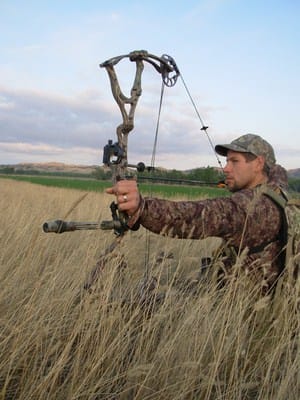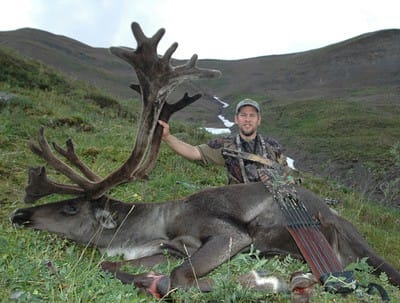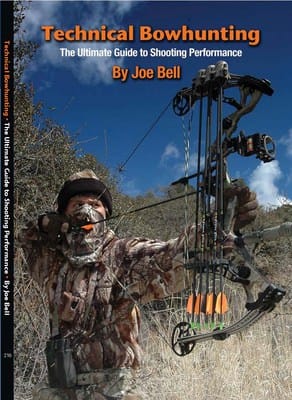
Every once in a while, you find a bowhunter who is as accurate with a bow as Billy the Kid was with a revolver. When they let the arrow fly, it hits whatever they were aiming at. Whether they are on the archery range or on the side of a mountain, they know how to get the job done even when shooting extremely long distances. Being accurate at long ranges isn’t rocket science—it just takes practice and knowing a few things about the technical side of archery.
Joe Bell of Arizona knows a few things about being accurate with archery tackle, even when shooting 40 to 60 yards and beyond. Bell is the editor of Bow & Arrow Hunting Magazine and is the author of Technical Bowhunting, a guide that shows bowhunters how to set up their own bows, shoot more accurately at short and long ranges and become an all-around better bowhunter.
In the West where Bell lives, it isn’t uncommon to have to take long shots at elk and antelope, but even whitetail hunters are sometimes faced with long distance shots beyond 40 yards. If you are accurate at long distances, you will be more apt to put more trophies on the wall. The first step in increasing accuracy, according to Bell is understanding how to work on your own equipment.

“Most bowhunters who can accurately shoot at great distances set up their bows from start to finish,” Bell said. “They know how to tune a bow properly and what to do when their arrows aren’t flying correctly. They constantly test their equipment to get the right broadhead and arrow combination and regularly fine tune their bow to get the most accurate set up they can.”
To have an accurate set up, you first need a good bow. Bell suggests having a bow with a brace height of around 7 inches. A bow with a long brace height is forgiving but lacks speed. A bow with a short brace height is often super fast but not as accurate in the hands of an average bowhunter.
“A bow with a 7-inch brace height is fast so if you misjudge the yardage of a shot by a few yards, you will be ok and still hit relatively close to where you are aiming,” Bell said. “A 7-inch brace height is still fairly forgiving so the bow will be accurate.”
The biggest thing that will increase a bowhunters’ ability to hit their mark every time at great distances is practice. You know the saying—practice makes perfect. Bell suggests shooting at even greater distances than you would ever feel comfortable shooting in a hunting situation.
“If a bowhunter wants to be comfortable shooting at game animals out to 40 yards, they should practice at 50, 60 or 70 yards on a regular basis,” Bell said. “It keeps their shooting muscles fresh and their confidence up so they will feel extremely comfortable taking the 40-yard shot when the moment arises. On the practice range, bowhunters should concentrate on every shot and practice a subconscious release to eliminate punching the trigger.”

Bell added, “The nice thing is when you are practicing, the worst thing that can happen is you miss the bail of hay or the 3D target. The long-distance practicing makes bowhunters a better shot in the field, regardless of the distance they shoot at.”
If your form isn’t perfect at 70 yards, it will show when the arrow hits the target and you are several inches away from where you were aiming. When shooting at long distance targets, you can quickly see what happens when you drop your bow arm after the shot or pull left or right as you release the string. Practicing long range shots forces you to eliminate those bad habits or you won’t be very accurate. Keep in mind that regardless of how good of a shot you are, your groups will get larger at long ranges.
“If you can shoot 4-inch groups at 40 yards, expect 8-inch groups at 80 yards. It’s that simple,” Bell explained.
Practicing at long ranges also improves your mental toughness. If you don’t practice at 50 yards but take a 50-yard shot at a monster buck, you are probably taking the shot out of desperation and hoping that you hit where you are aiming. On the other hand, if you regularly practice at 60 yards and a big bull elk gives you a 50-yard shot, you will mentally know you are capable of making the shot and will know how to execute the shot properly.
Last but not least, most bowhunters who shoot animals at long distances regularly experiment with different broadheads, arrows and vanes. Some broadheads and vanes work great when being shot at long distances while others don’t. If you plan to shoot at 40 yards or beyond, the large broadheads and vanes of yesteryear probably won’t work as well as many of today’s shorter broadheads.
Using a heavier, small diameter arrow also helps when taking long distant shots instead of a larger diameter lightweight arrow. “In order to eliminate as much wind drift as possible, shoot the shortest, heaviest, smallest-diameter arrow shaft possible with the least amount of fletching to properly stabilize the arrow and broadhead. However, there is a point of no return. Arrows shorter than 25 inches (shaft length) can become unstable at high speeds,” Bell advised.
Joe Bell’s book, Technical Bowhunting, is available at Amazon.com, Barnes & Noble or through the publisher atwww.up-publications.com.



